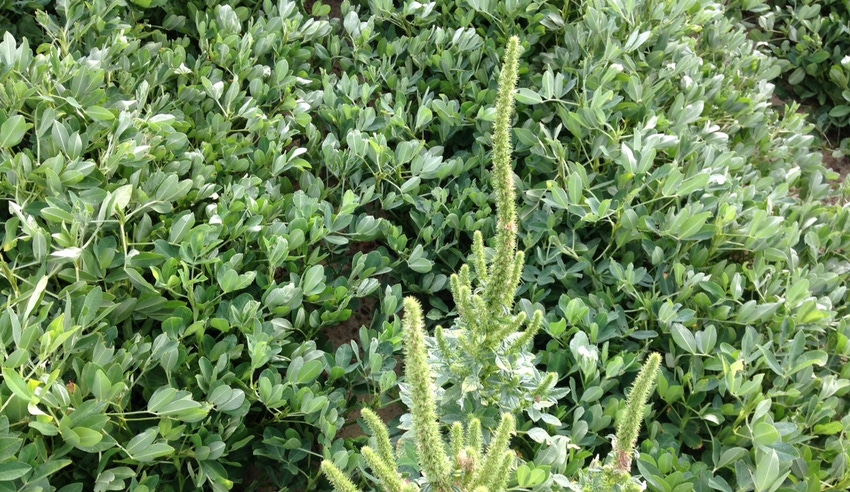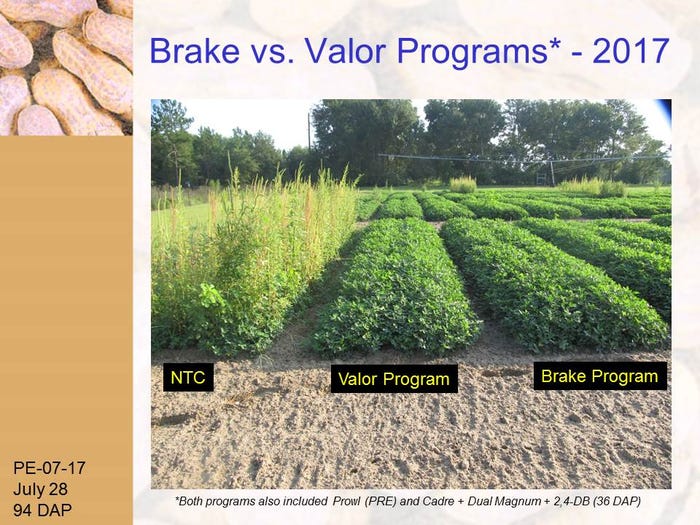August 30, 2017

With all the recent ado in the weed science community about off-target movement of dicamba, which has not yet been a major issue in Georgia, the focus on herbicide-resistance, especially PPO-resistance in Palmer amaranth, has lost some steam.
Southeastern peanut growers need to be reminded about the threat of PPO-resistance since several important herbicides (Valor, Cobra, and Ultra Blazer) have this particular mode of action. I do not believe that PPO-resistance in Palmer amaranth has occurred yet in GA (?) but my colleagues in AL, MS, NC, and SC are investigating suspect populations.
One of the things that I have heard frequently from growers during my 30-year weed science career is that there has always been another herbicide, a “silver bullet” so to speak, that got us out of a jam. Although this may have been true in the past, it is not so today.
The last herbicide mode of action (HPPD inhibitors) was discovered in 1980. New herbicide discovery slowed over the last few decades in response to the proliferation of herbicide-resistant crops, numerous industry consolidations, and increased registration costs. Additionally, discovering a new herbicide mode of action is like trying to find a needle in a haystack or maybe even turning lead into gold (alchemy).
You might not realize this but it takes approximately $286 million, 11 years, and the screening of more than 160,000 chemicals to get 1 new pesticide on the market!
Although peanuts are considered to be a minor crop in comparison to field corn and soybeans, peanut growers are fortunate to have 22 herbicide active ingredients registered for use. Eight of those herbicides have been registered since I began my peanut weed science career in 1997. These include Select (1998), Strongarm (2000), Valor (2001), Spartan (2004), Cobra (2005), Fusilade (2009), Warrant (2014), and Zidua (2017).
The only “silver bullet” herbicide peanut growers will likely see in the next few years is Brake (fluridone). I have been testing Brake for the last few years and it does look very promising especially since it has an underutilized mode of action (Figure 1). For the record, Brake is a PDS inhibitor (WSSA MOA #12). Not trying to scare you but after Brake, THERE IS NOTHING ELSE NEW IN THE PEANUT HERBICIDE PIPELINE!!!!!!!!!!!!!!!
Since the peanut herbicide pipeline is dry, it is of the utmost importance that growers become more conscious about herbicide stewardship, especially when it comes to the PPO-herbicides.
I have said this before that the discipline of weed science is not just about the use of herbicides. Long-term sustainable weed management programs must also include the use of tillage, cover crops, row spacing, crop rotation, application technology, post-harvest strategies (i.e. the weed seed-bank), and hand-weeding. The use of reduced herbicide rates is also strongly discouraged since more is known today about the negative effects that reduced rates can have on the evolution of herbicide-resistance.
Although there has not been a new herbicide mode of action in 37 years, I do believe that the remaining major agricultural chemical companies are now focusing more on trying to find us a new silver bullet. I hope this happens sooner than later since it will take some time for university folks like me to properly test that herbicide. Until that time, herbicide stewardship must be paramount for all.
As always, good weed hunting!

About the Author(s)
You May Also Like






